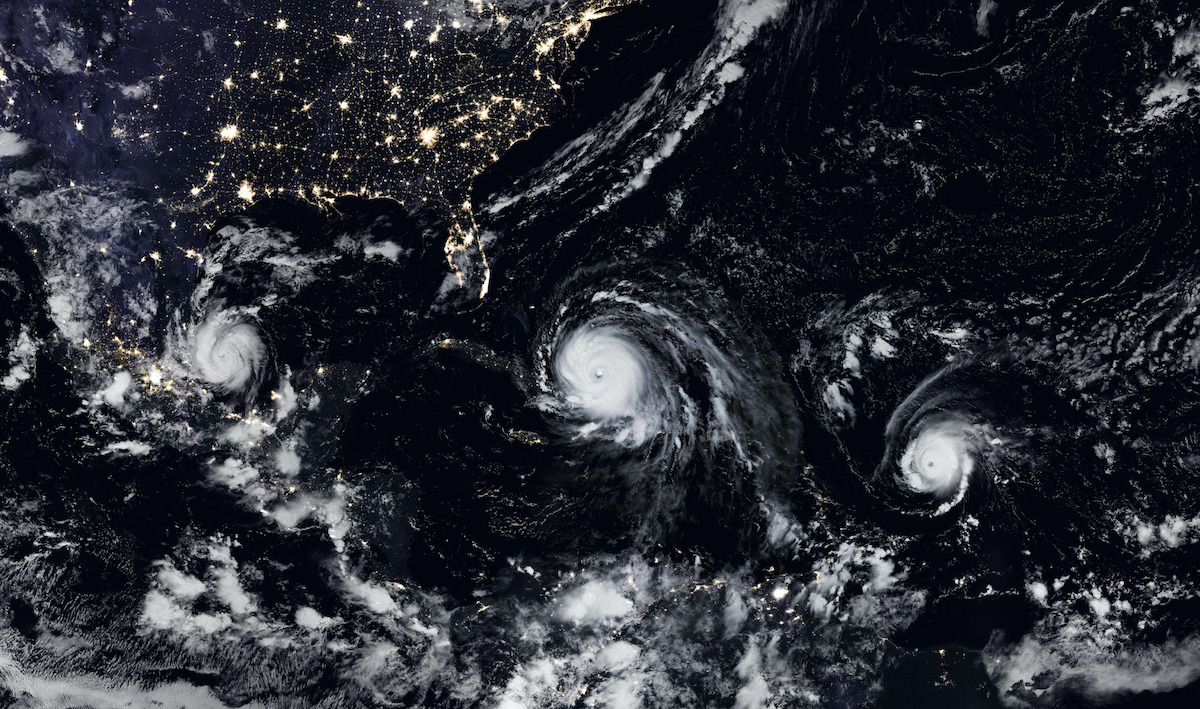 Earth & Space
Earth & Space
Storm Defense with Mangroves
Humans have been largely unsuccessful at protecting assets and economic activity against tropical cyclones. Mangrove forest conservation efforts could yield protection benefits from a coastal defense system that is already in place, cheap to maintain, and self-regenerating.

Roughly one in five of us lives in a coastal area at risk from tropical cyclones. For decades investments in early warning systems have allowed us to move out of harm's way, reducing the number of lives lost. Despite this progress, we remain unsuccessful at protecting assets and economic activity from cyclones.
In Sandy's aftermath, New York City considered a 10 billion coastal defense project for a section of lower Manhattan. While this project may make sense for New York City, for most places, the cost of construction and maintenance of coastal defenses are not worth the benefits in terms of protection. Not only that, human-made coastal barriers usually have additional adverse ecological effects. An ideal solution would be a coastal defense system that would not need to be constructed. It would be cheap to maintain, regenerate when it suffered cyclone damage, and ecologically friendly.
Mangrove forests still prevalent in proximity to many coastal communities may provide such a defense system. In a recent article, we set out to quantify the protection level that mangroves provide against hurricanes in Central America. The region offers an ideal setting for this study, given the frequency of hurricane strikes and the presence of wide mangrove belts.
Because the impact of hurricanes on economic activity is highly localized, we needed to measure economic activity, hurricane strength, and mangrove protection at the smallest scale possible. To measure economic activity, we took advantage of the observation that the consumption of human-made lights at night follows the economic cycle. When the economy booms, satellites see a brighter planet. When we go through a recession, satellites see a dimmer world. Best of all, we can observe these changes in night lights on a very fine scale, roughly a grid of one square km cells. To measure the strength of hurricanes, we use a wind field model calibrated for the region. The model generates predicted maximum sustained wind speeds for each cell and for each storm that has affected the region since 2000. Last, we measure mangrove protection for each cell by calculating the mangrove forest's width on the path to the coast.
With our economic activity measures, hurricane strength, and mangrove protection, we then study whether night lights become dimmer as hurricane strength increases and whether the impact of hurricanes varies with the degree of mangrove protection. We use a regression framework for this analysis because it allows us to study these relationships while controlling for the effect of confounding time-invariant factors, such as topographic features, and time-varying common shocks, such as the business cycle.
So, do hurricanes reduce economic activity as measured by night lights? Yes, we find, for example, that a category three hurricane could reduce night lights in coastal areas by 17 percent in the year following a hurricane strike. Interestingly, however, this effect varies considerably with the degree of mangrove protection. While unprotected cells could see a reduction of 24 percent, cells protected by one km or more of mangroves experience no decline in night lights.
Great, so should we invest in Mangrove conservation to protect assets and economic activity against hurricanes? Yes, certainly more than we have in the past, but a couple of things should be kept in mind. First, peace meal efforts are unlikely to yield any protection benefits; in our sample areas protected by less than one km of mangrove forest suffered considerable damage. This finding implies that the focus should be on the conservation of wide mangrove belts. Second, we live on a warming planet, and sea-level rise could undo the mangroves' ability to provide protection. Accordingly, an important avenue for future research is to identify the areas that should be prioritized for conservation while accounting for the changes that our coastlines are likely to experience.
Original Article:
1. Valle A del, Eriksson M, Ishizawa OA, Miranda JJ. Mangroves protect coastal economic activity from hurricanes. Proc Natl Acad Sci. 2020;117(1):265-270.
Next read: The climate's barrier to coastal hurricanes by Jim Kossin
Edited by:
Massimo Caine , Founder and Director
We thought you might like
More from Earth & Space
Discovery of the first radiation belt beyond the Solar System
Jan 27, 2025 in Earth & Space | 3.5 min read by Juan Bautista Climent OliverOne million (paper) satellites
Jan 24, 2025 in Earth & Space | 3 min read by Ewan Wright , Andrew FalleVolcanic Ash: A Nutrient Boost for Reef-Building Corals
Sep 18, 2024 in Earth & Space | 4 min read by Frank Förster , Tom SheldrakeAmmonia Energy: A Call for Environmental Awareness
Aug 29, 2024 in Earth & Space | 3.5 min read by Matteo Bertagni , Robert Socolow , Amilcare PorporatoLikely increase in coral thermal tolerance at a Pacific archipelago
Dec 29, 2023 in Earth & Space | 3 min read by Liam LachsEditor's picks
Trending now
Popular topics


